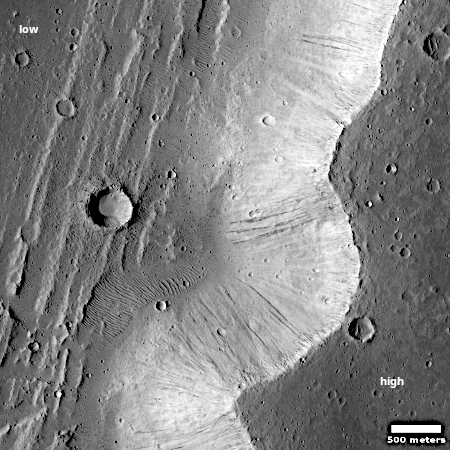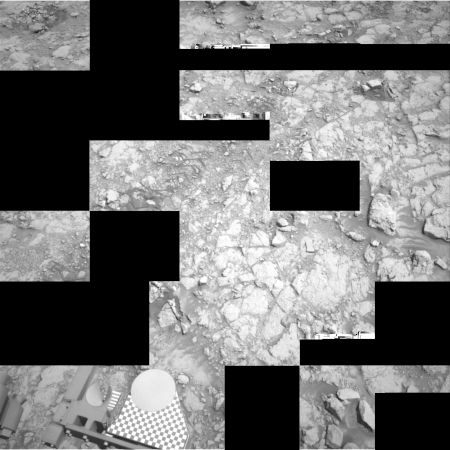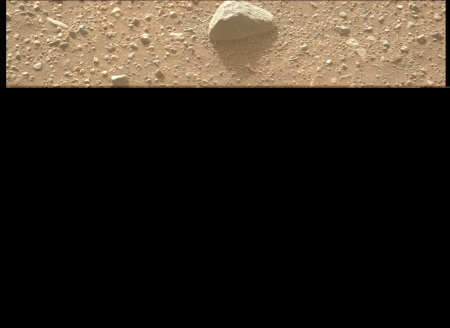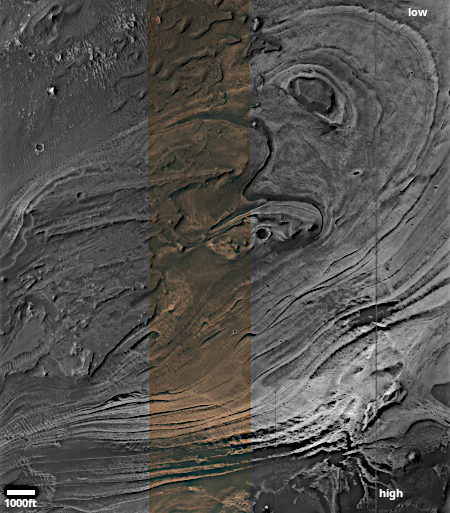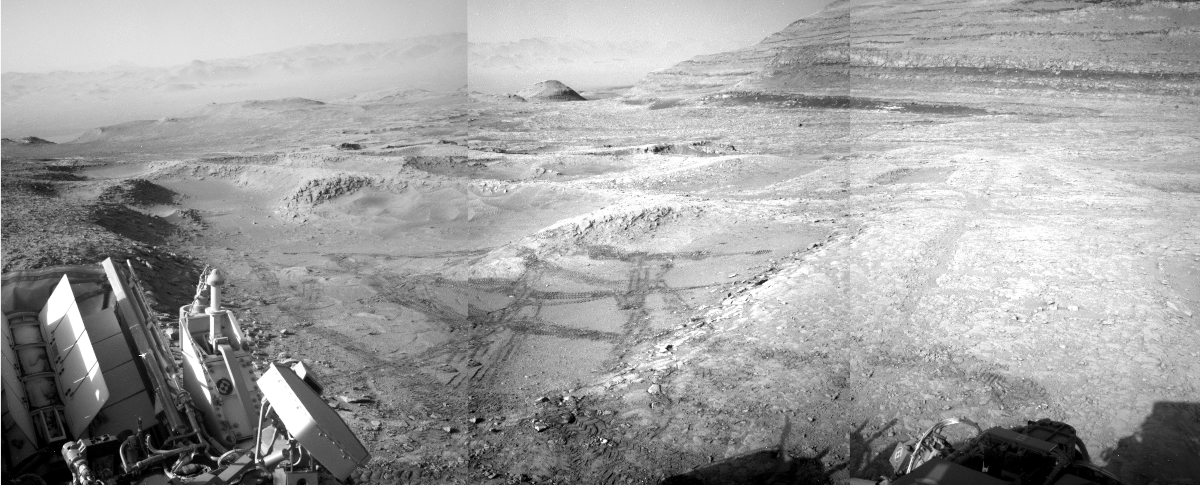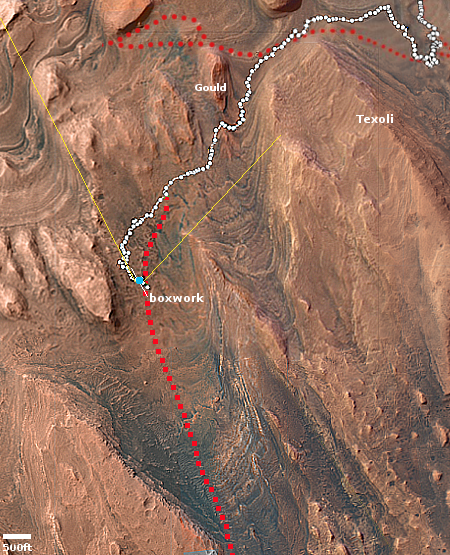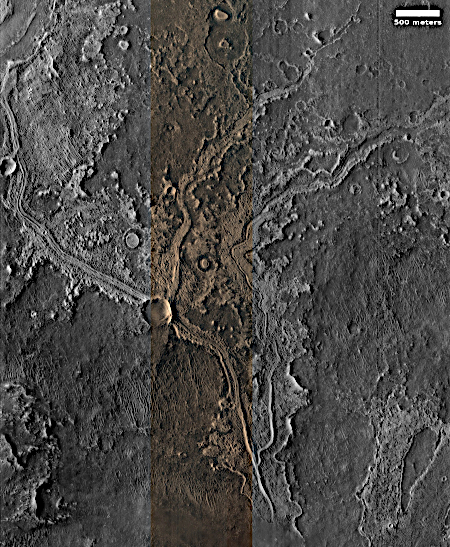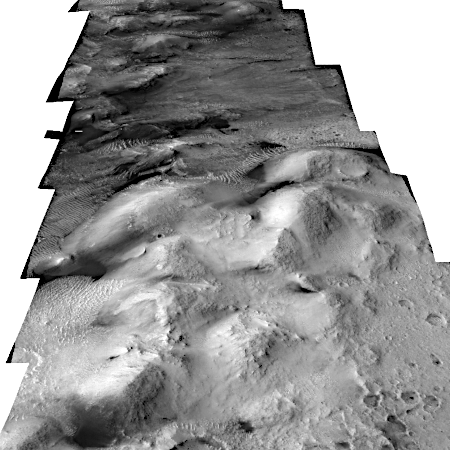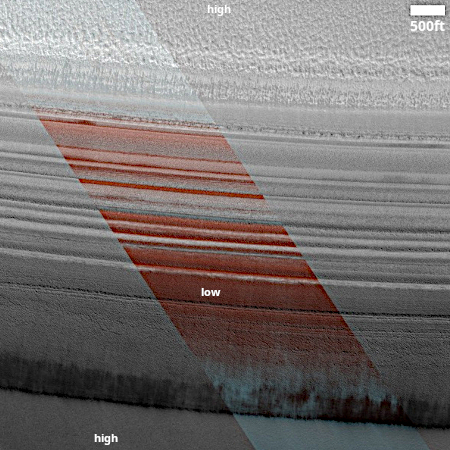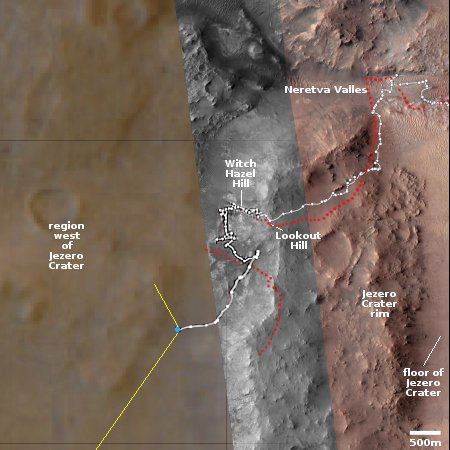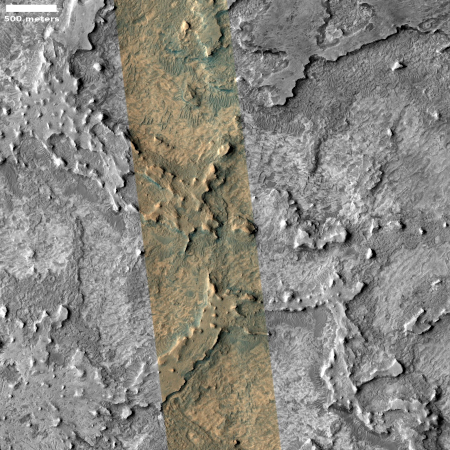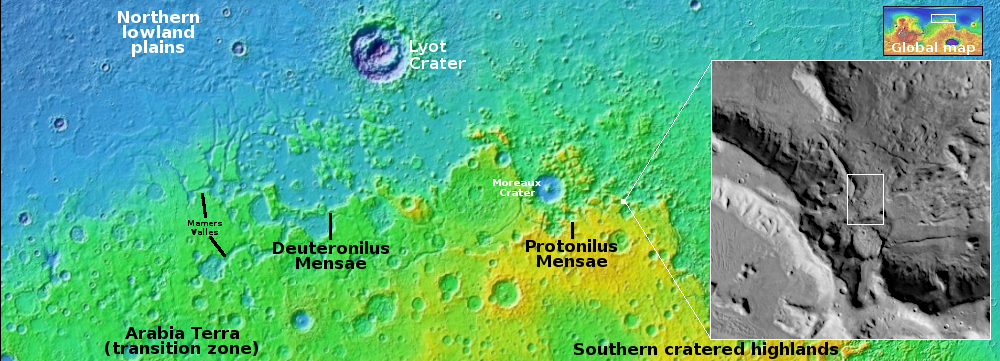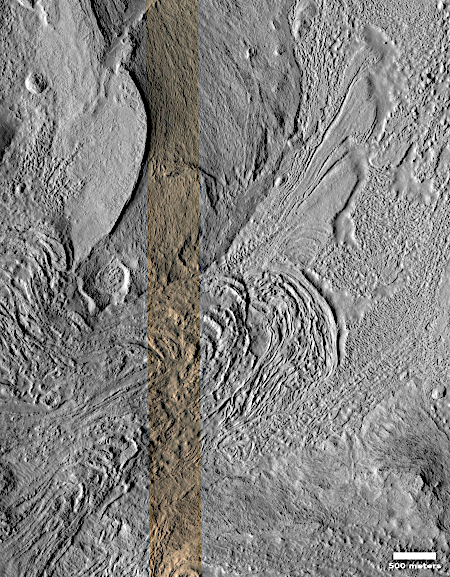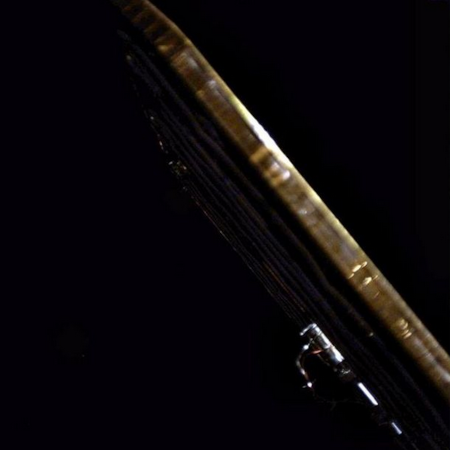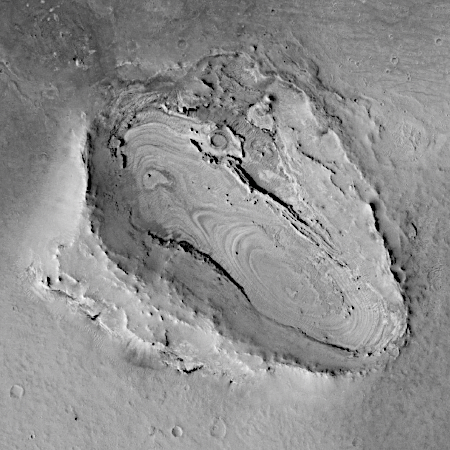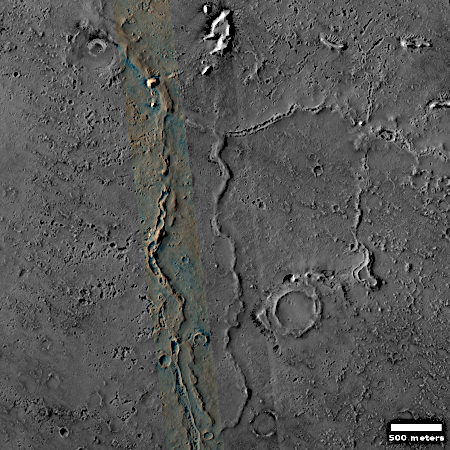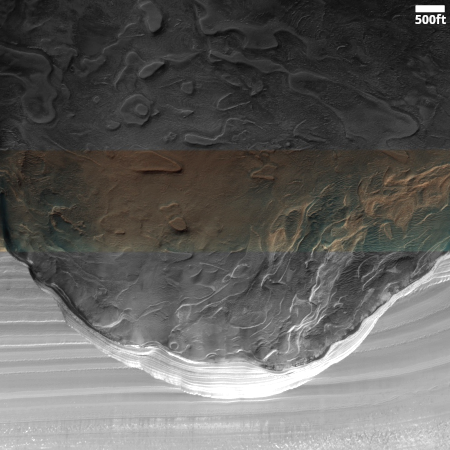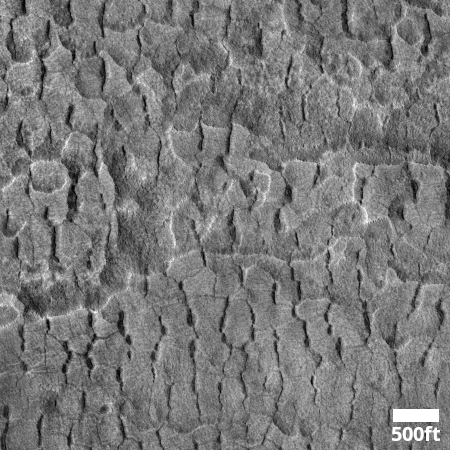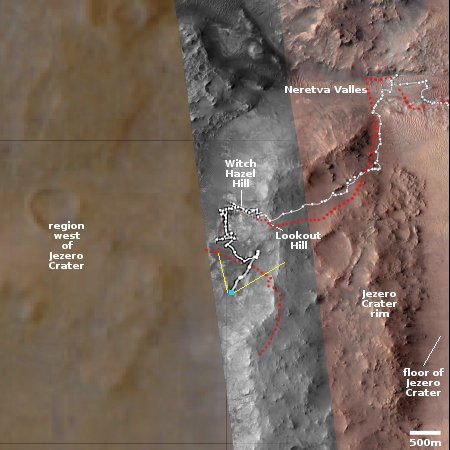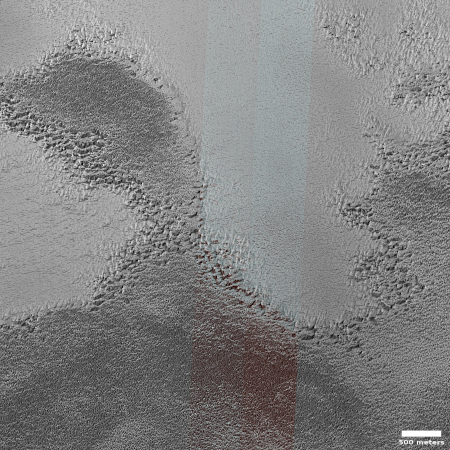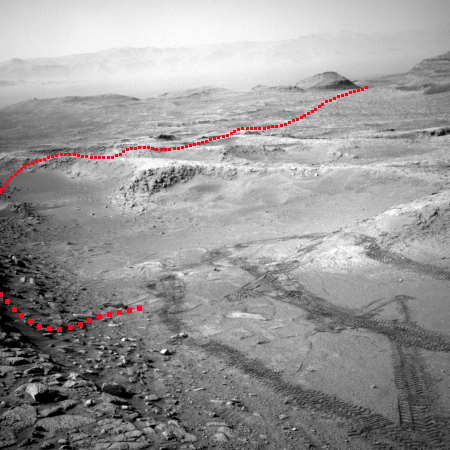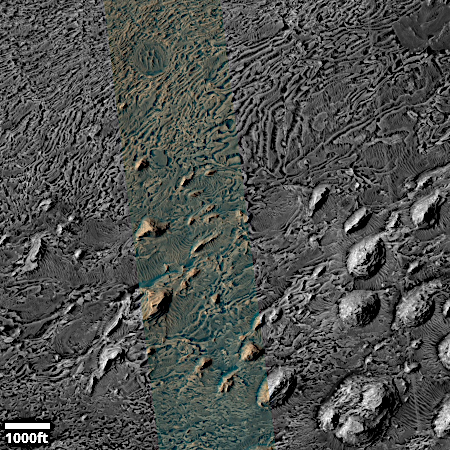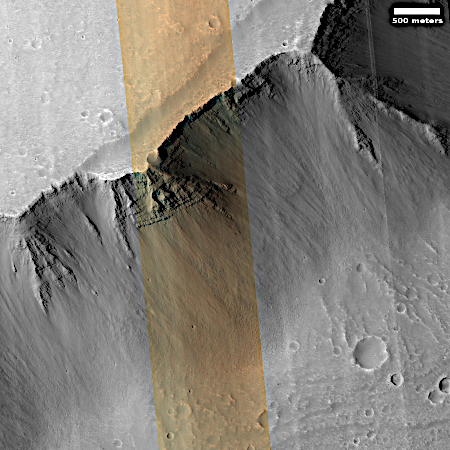Many Martian mysteries in one spot
Just because there are no new images coming back from Mars at this time because the Sun is in the way does not mean we can’t enjoy more cool Martian images. The picture to the right, cropped, reduced, and sharpened to post here, was taken on October 20, 2025 by the high resolution camera on Mars Reconnaissance Orbiter (MRO).
Labeled merely a “terrain sample,” this means it was taken not as part of any particular research project but to fill a gap in the camera’s schedule. The camera team needs to take regular photographs in order to maintain the camera’s proper temperature, and when there is a long gap they add a terrain sample image to the schedule. Usually they try to pick some target of interest.
In this case the target is this 2,500-foot-high cliff, in which we can see a whole range of Martian geological mysteries. First there are the slope streaks on the cliff, a feature unique to Mars but as yet unexplained. Resembling avalanches, these streaks leave no debris piles at their base, do not change the topography in any way, and can appear randomly throughout the year, fading with time. Though the streaks in this picture are dark, streaks can also be bright.
Both the parallel ridges at the base of the cliff, as well as the cliff itself, are remnants of other major geological events, at least based on present theories.
» Read more
Just because there are no new images coming back from Mars at this time because the Sun is in the way does not mean we can’t enjoy more cool Martian images. The picture to the right, cropped, reduced, and sharpened to post here, was taken on October 20, 2025 by the high resolution camera on Mars Reconnaissance Orbiter (MRO).
Labeled merely a “terrain sample,” this means it was taken not as part of any particular research project but to fill a gap in the camera’s schedule. The camera team needs to take regular photographs in order to maintain the camera’s proper temperature, and when there is a long gap they add a terrain sample image to the schedule. Usually they try to pick some target of interest.
In this case the target is this 2,500-foot-high cliff, in which we can see a whole range of Martian geological mysteries. First there are the slope streaks on the cliff, a feature unique to Mars but as yet unexplained. Resembling avalanches, these streaks leave no debris piles at their base, do not change the topography in any way, and can appear randomly throughout the year, fading with time. Though the streaks in this picture are dark, streaks can also be bright.
Both the parallel ridges at the base of the cliff, as well as the cliff itself, are remnants of other major geological events, at least based on present theories.
» Read more

